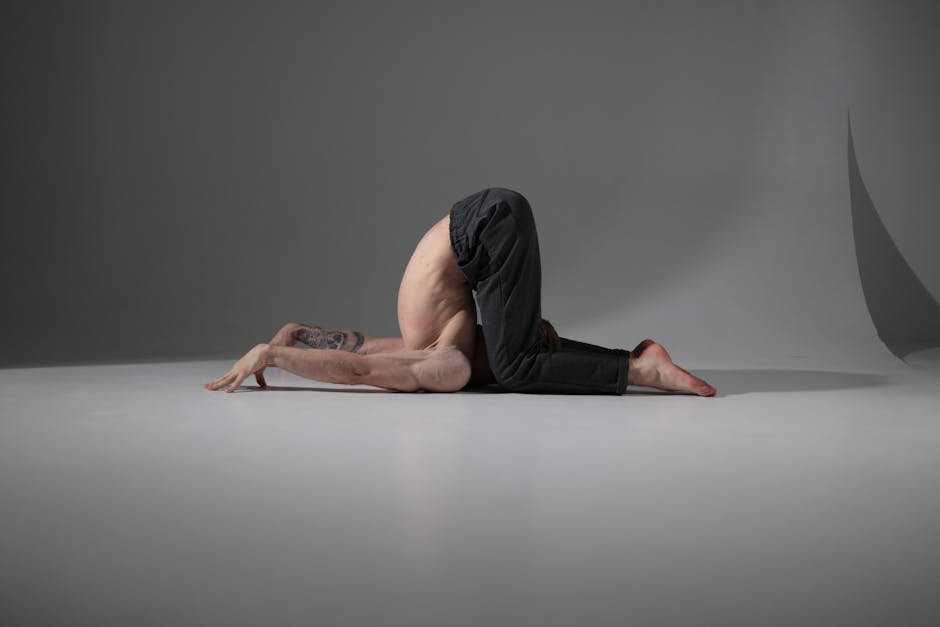The Evolution of Global Wellness Trends: From Yoga to Biohacking
Wellness isn’t just about hitting the gym or eating a salad anymore. It has become a constantly shifting tapestry of trends, philosophies, and practices. From ancient traditions like yoga to cutting-edge methods like biohacking, what we consider "wellness" keeps transforming in fascinating ways. Let’s unpack how
Yoga: The Cornerstone of Wellness

Yoga has been a wellness mainstay for over 5,000 years, originating in India as a spiritual practice. Over time, it has expanded far beyond its roots, becoming both a physical exercise and mental health tool embraced by millions worldwide. Its appeal lies in its simplicity: no fancy equipment required, just a mat and some space.
In the 20th century, yoga went mainstream in the West thanks to influential figures like B.K.S. Iyengar and modern adaptations like Power Yoga. Today, you’ll find everything from goat yoga (yes, with actual goats!) to virtual yoga classes that can be streamed from your living room. This evolution reflects the ability of traditional practices to adapt while staying true to their core principles.
Science has also validated yoga's benefits. Studies published by PubMed confirm its role in reducing stress hormones like cortisol while improving flexibility and cardiovascular health. It’s this mix of ancient wisdom and proven science that keeps yoga relevant.
Meditation and Mindfulness: From Niche Practice to Mainstream Necessity
If yoga is the body’s best friend, meditation might be its quieter sibling. Mindfulness techniques have surged in popularity over the past two decades, largely due to increased awareness of mental health issues. Apps like Calm and Headspace make it easy for anyone to start meditating, even if they only have five spare minutes.
The science behind mindfulness is hard to ignore. A landmark study by Harvard University showed that mindfulness practices could physically alter the brain’s gray matter in areas related to memory and emotion regulation (Harvard Gazette). These findings have encouraged schools, corporations, and even prisons to adopt mindfulness programs as tools for stress management and emotional resilience.
One reason mindfulness has gained traction is its accessibility. There’s no need for expensive gear or memberships, just your focus and breath. It has become an antidote to the fast-paced demands of modern life.
The Role of Nutrition: From Diet Fads to Personalized Eating
The connection between food and wellness isn’t new, but how we approach it certainly is. Remember when low-fat diets were all the rage? Or when Atkins made carbohydrates public enemy number one? Nutrition trends have come and gone like waves crashing on a beach. What’s changed now is the emphasis on personalization.
Enter personalized nutrition plans tailored to your unique biology. Companies like Viome analyze your gut microbiome to suggest foods that work best for your body’s needs (Viome). This shift moves us away from one-size-fits-all solutions toward a more customized approach where your DNA and microbiota play starring roles.
Plant-based eating is another trend gaining ground, not just for personal health but also for environmental reasons. Data from The Lancet suggests that plant-forward diets can significantly reduce risks of chronic diseases while lowering greenhouse gas emissions associated with animal farming.
Fitness Tech: The Marriage of Movement and Data
Step counters and heart rate monitors were once considered futuristic gadgets; now they’re everyday essentials thanks to devices like Fitbit and Apple Watch. Fitness tech isn’t just about tracking steps anymore, it’s about providing actionable insights into sleep quality, stress levels, VO2 max (oxygen efficiency), and even menstrual cycles.
The concept of gamifying fitness has also taken hold. Apps like Strava let users compete with friends on running routes or cycling trails, adding a social element that keeps motivation high. Similarly, Peloton combines virtual group classes with live instructors who cheer you on from miles away.
This tech-driven approach appeals especially to data enthusiasts who enjoy quantifying progress over time. It adds an element of precision that traditional workout routines often lack.
Biohacking: The Science Experiment You Call Your Body
This brings us to biohacking, a term that sounds straight out of a sci-fi novel but is very much part of today’s wellness lexicon. Biohackers experiment with everything from intermittent fasting protocols to nootropics (cognitive enhancers) in pursuit of peak performance.
Take Dave Asprey, founder of Bulletproof Coffee (Bulletproof) and one of biohacking's most prominent figures. His coffee concoction mixed with butter sparked a global trend among those seeking sustained energy without sugar crashes.
At its core, biohacking is about testing what works for you, whether that means wearing blue-light-blocking glasses before bed or injecting yourself with peptides (the latter being controversial). While some aspects lack robust scientific backing, others align well with existing research on nutrition, sleep hygiene, or circadian rhythms.
This trend also overlaps with advancements in wearable technology. Devices like Oura rings measure variables such as heart rate variability (HRV), providing deeper insights into how lifestyle changes affect overall well-being (Oura Ring).
Tying It All Together
What stands out most about these diverse wellness trends is their adaptability, they cater to different needs at different times in our lives. Some days you might crave the meditative stillness of yoga; other days call for data-driven fitness routines or experimental biohacks designed for peak efficiency.
If anything unites these approaches, it’s the shift toward proactive health management rather than reactive treatment. People are no longer waiting until they’re sick to think about their well-being; they’re taking active steps every day (whether through mindful breathing or tracking their sleep metrics) to build resilience against future challenges.
So whether you’re rolling out your yoga mat or exploring the latest wearable device, there’s never been a better time to engage with wellness on your terms.
This article was generated by AI